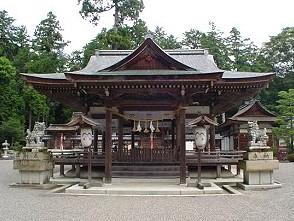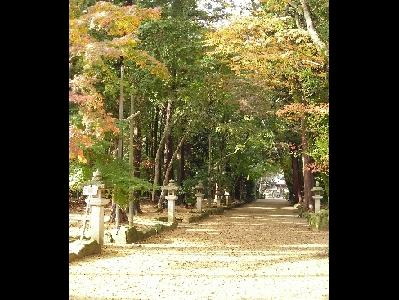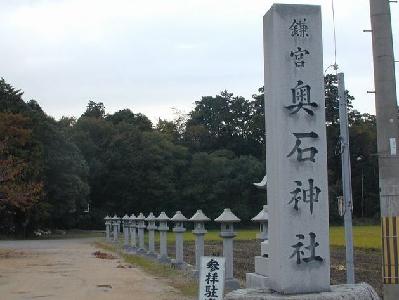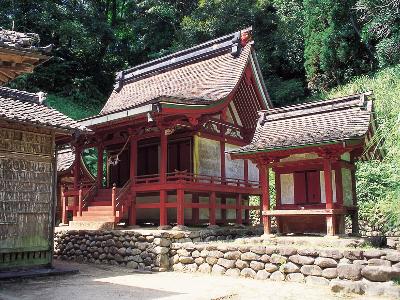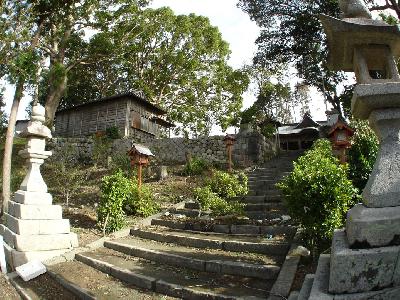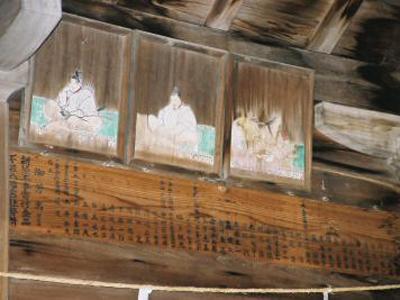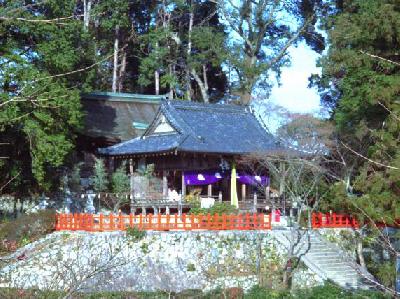|
The origin of Oiso Shrine in Azuchi Town, Shiga Prefecture, is unknown, but it is presumed to have been the oratory for the mountain god residing at the top of Mt. Kinugasa. The enshrined deity is Amatsukoyane no Mikoto, an ancestor of the Fujiwara clan.
According to a legend, when Ototachibanahime no Mikoto threw herself into the sea to appease the rage of the sea god and saved Yamato Takeru, who was on his way to the eastern land, she was pregnant and said “I will stay in Oiso Woods and become a guardian goddess for safe childbirth.” From this episode, the shrine is visited by a lot of women who offer a prayer for safe delivery.
Guarded by Oiso Woods, Honden (the main hall) stands at the end of the front approach. It is a 3-bay flowing style building. Tosatsu (the wooden plate staked to a building7s ridgepole stating details of the construction) shows that it was constructed in 1581. The stone monument inscribed with a poem written by Motoori Norinaga, a Japanese scholar of Kokugaku during the Edo period, stands in a corner of the precinct.
According to a legend, when Ototachibanahime no Mikoto threw herself into the sea to appease the rage of the sea god and saved Yamato Takeru, who was on his way to the eastern land, she was pregnant and said “I will stay in Oiso Woods and become a guardian goddess for safe childbirth.” From this episode, the shrine is visited by a lot of women who offer a prayer for safe delivery.
Guarded by Oiso Woods, Honden (the main hall) stands at the end of the front approach. It is a 3-bay flowing style building. Tosatsu (the wooden plate staked to a building7s ridgepole stating details of the construction) shows that it was constructed in 1581. The stone monument inscribed with a poem written by Motoori Norinaga, a Japanese scholar of Kokugaku during the Edo period, stands in a corner of the precinct.
| [+ADDRESS] | 
|

